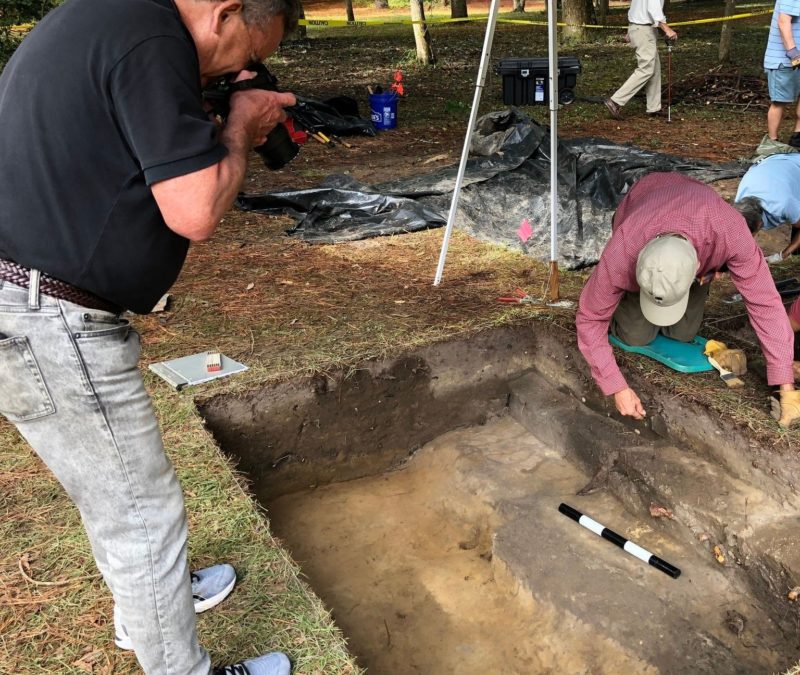Roanoke Island’s sandy soil has many stories a story to tell. One of those stories is the mystery of the “Lost Colony.”
Archaeologists with the First Colony Foundation – which is dedicated to conducting archaeological and historical research, combined with public education and interpretation relating to the first attempted English colonies on Roanoke Island – in partnership with the National Park Service, are working hard to understand this story.
“Archaeology is about building a picture of the past by uncovering and carefully evaluating the evidence,” said Eric Klingelhofer, Vice President of Research at the First Colony Foundation.
Starting in September 2021, the First Colony Foundation conducted a series of permitted archeology digs to gain a better understanding of how English settlers lived and worked during their brief sojourns in the “New World.” Digging centered around the site of a workshop set up in 1585, since dubbed the “science laboratory,” where members of the expedition tested ore samples for the presence of gold and other valuable metals and assessed the potential commercial value of plants and herbs.
The ground does not yield its stories easily. Sometimes a clue is no more than a stain in the soil, like the “features” (as archaeologists call them) discovered last fall. Soil features are often all that remains of structures made of wood and other perishable, organic materials. Though subject to decay, such material can be accurately dated in the laboratory where stone cannot.
In addition, though the workshop area has been heavily excavated over the years, September’s dig also uncovered an assortment of American Indian and Elizabethan-era pottery, flint possibly used to start work fires in the science workshop, and part of a stoneware crucible vessel used in testing minerals.
“Archaeology opens a window on the past that helps us better understand how we can learn from the struggles of people in the past,” said Jami Lanier, Cultural Resource Manager with the Outer Banks Group of the National Park Service. “You never know what a shovel full of soil will reveal.”
The “Lost Colony” story is a mystery within a mystery, Lanier says. Because it’s not only a question of where those 117 men, women and children went, but where they lived and worked while on Roanoke Island.
So, the search continues. Because the soil of Roanoke Island indeed has a stories to tell.
Adapted from the National Park Service. Originally published in the 2022 edition of the Outer Banks Group’s “In The Parks” newspaper.

